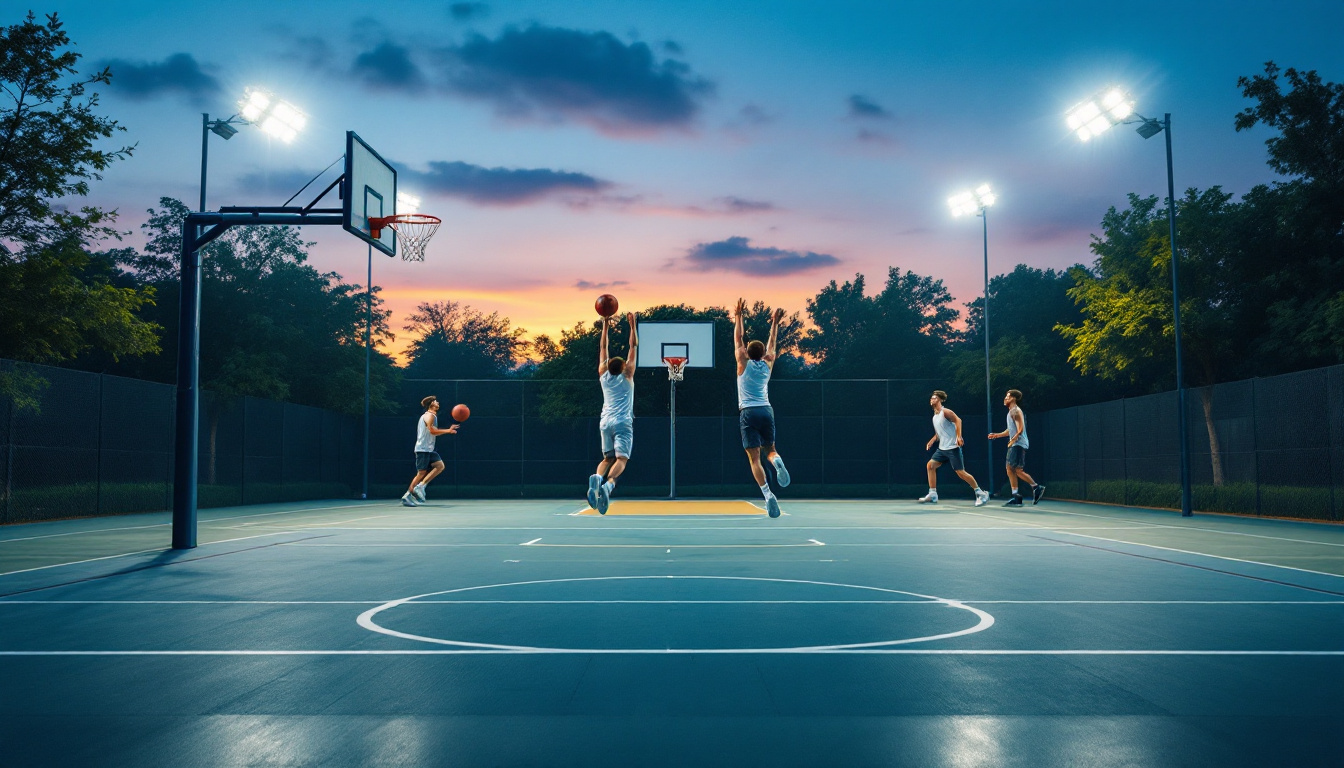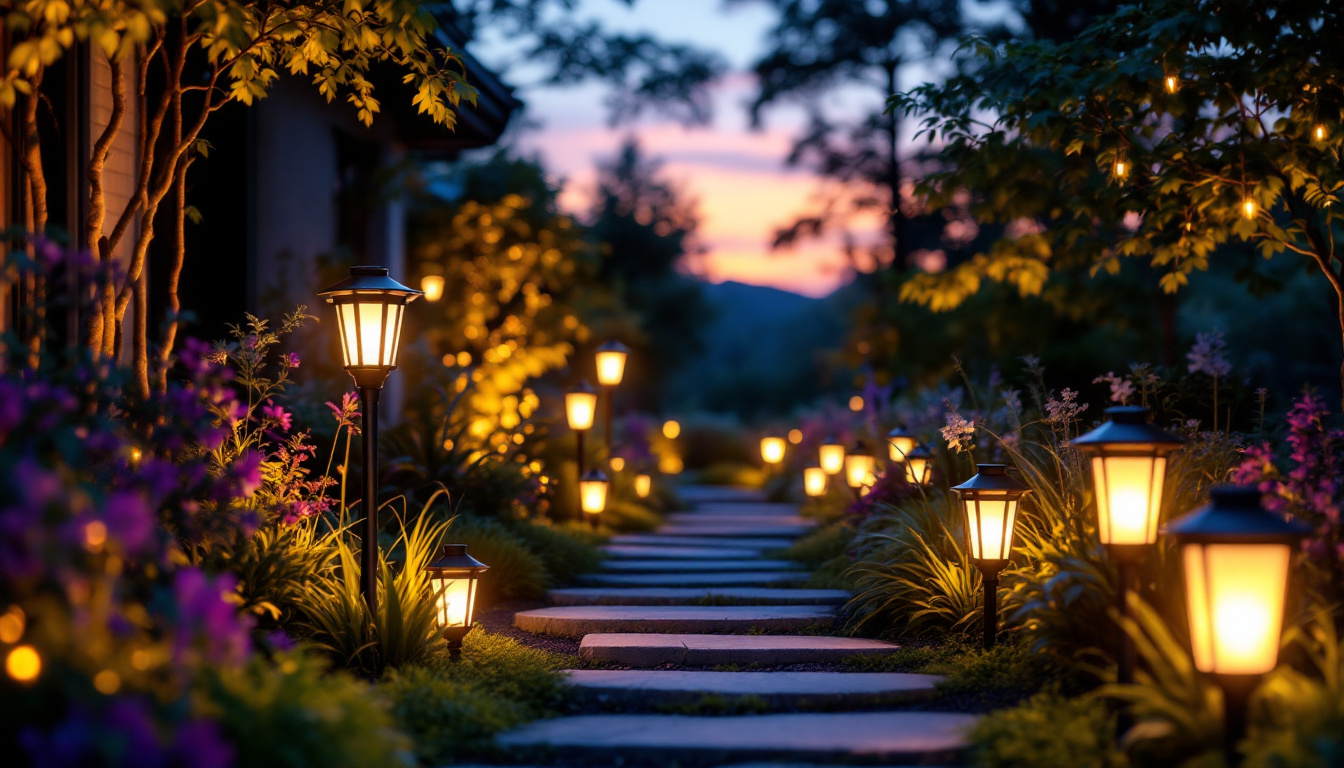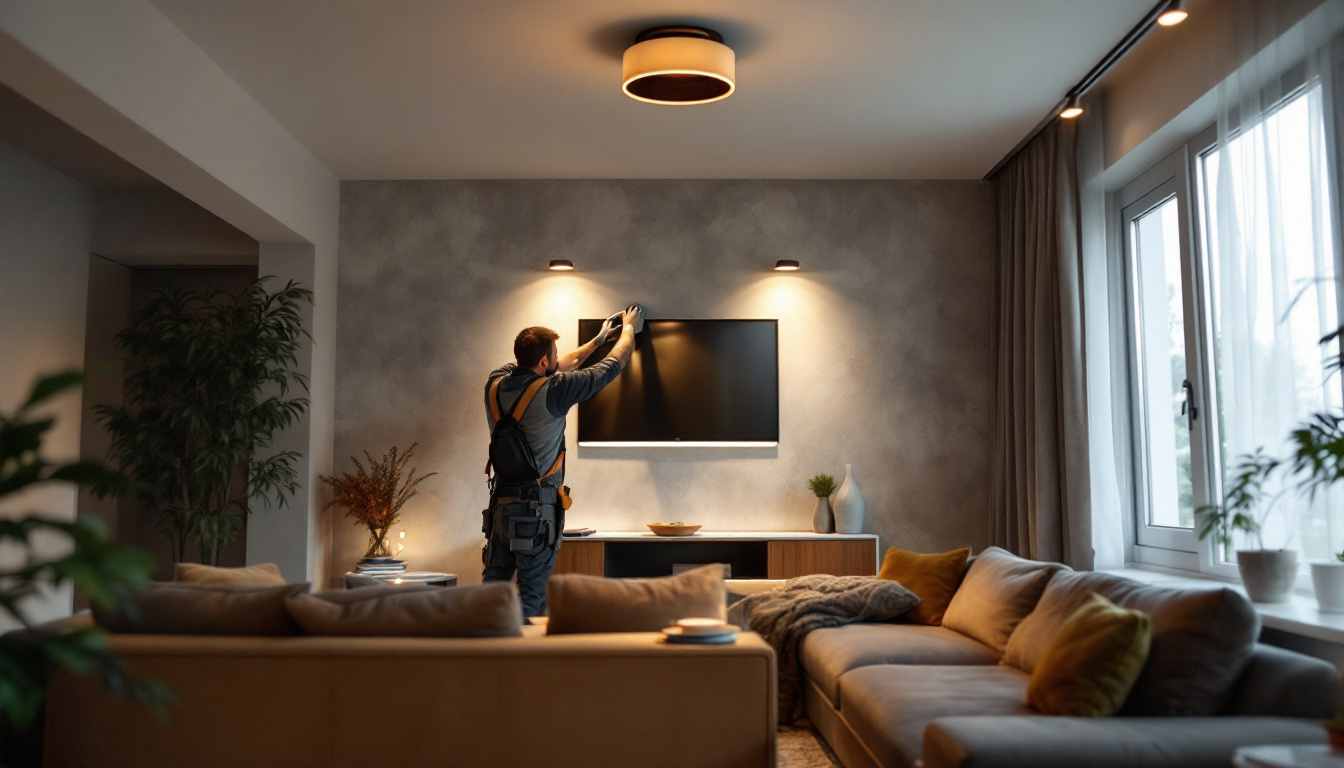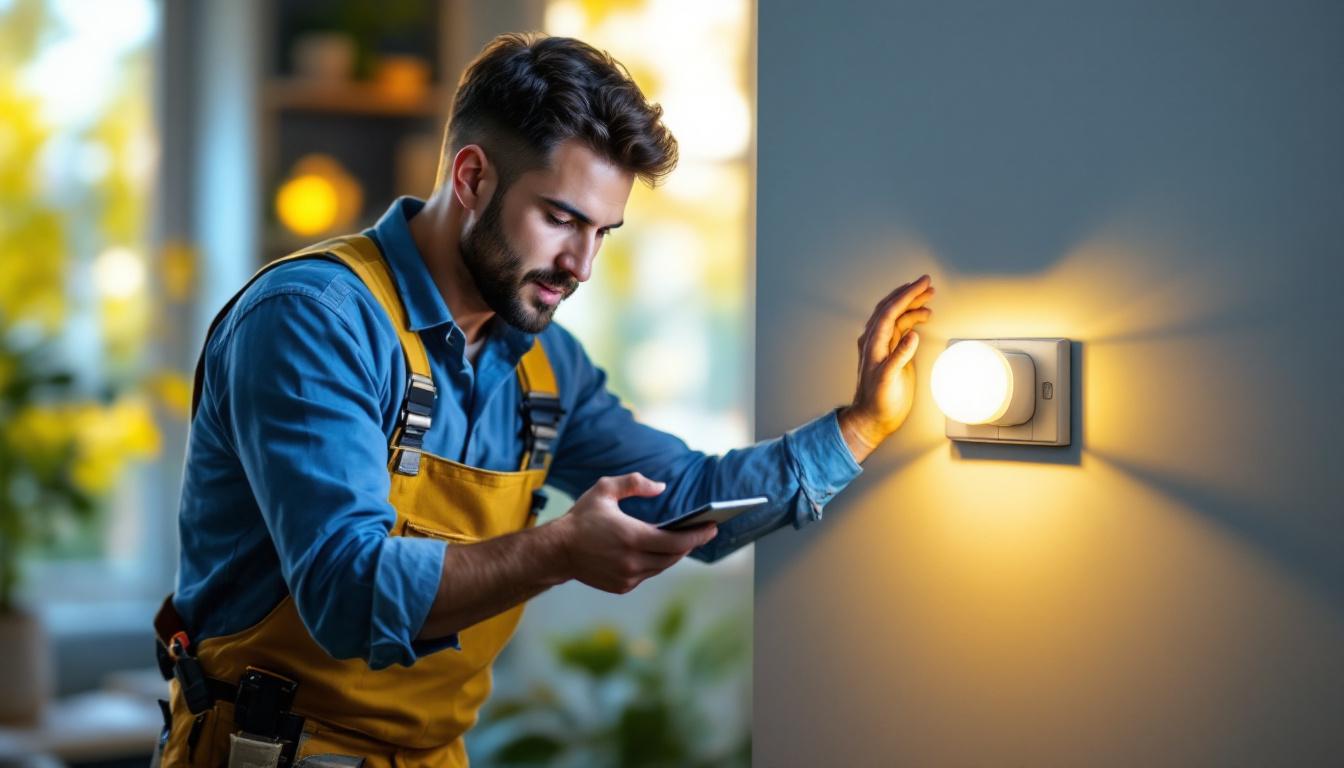
Lighting plays a crucial role in enhancing the performance and safety of basketball players, whether in professional arenas or community courts. As a lighting contractor, understanding the specific requirements for basketball court lighting is essential for delivering high-quality installations that meet the needs of athletes and organizations alike. This article delves into the key aspects of basketball court lighting, including types of lights, optimal lighting levels, installation considerations, and maintenance practices.
Before embarking on a lighting project, it is vital to understand the unique requirements of basketball courts. These requirements can vary based on the level of play, the type of facility, and the specific needs of the users.
Basketball courts can be categorized into several types, including indoor, outdoor, professional, and recreational. Each type has distinct lighting needs. Indoor courts typically require more controlled lighting conditions, while outdoor courts must contend with ambient light and weather conditions.
Professional courts, such as those used in the NBA, demand high-quality lighting that minimizes shadows and glare, ensuring optimal visibility for players and spectators. In contrast, recreational courts may have more flexibility in terms of lighting quality, but safety remains a priority. Additionally, the surface material of the court can influence how light is reflected and absorbed, further impacting the overall lighting strategy. For instance, hardwood floors used in indoor courts can enhance brightness, while asphalt or concrete surfaces in outdoor courts may require more powerful fixtures to achieve the same effect.
Illuminance levels for basketball courts are typically measured in lux or foot-candles. The recommended lighting levels vary depending on the type of play. For example, professional leagues may require lighting levels of 750 lux or higher, while recreational courts might suffice with 300 to 500 lux.
Adhering to established standards, such as those set by the Illuminating Engineering Society (IES), is crucial for ensuring adequate visibility and safety. These standards help guide lighting contractors in selecting the appropriate fixtures and layouts for their projects. Furthermore, it is essential to consider the color temperature of the lighting, as warmer tones can create a more inviting atmosphere, while cooler tones may enhance alertness and focus. This aspect is particularly important in multi-use facilities where basketball courts may be utilized for various events, from community gatherings to competitive tournaments.
Selecting the right lighting fixtures is a critical aspect of any basketball court lighting project. The choice of fixtures can significantly impact the quality of light, energy efficiency, and overall aesthetics of the court.
Common types of lighting fixtures used in basketball court installations include LED, metal halide, and fluorescent lights. LEDs have gained popularity due to their energy efficiency, long lifespan, and ability to provide high-quality illumination. They also offer flexibility in terms of color temperature, which can enhance the visual appeal of the court.
Metal halide fixtures, while offering excellent color rendering, are less energy-efficient and have a shorter lifespan compared to LEDs. Fluorescent lights are typically not recommended for basketball courts due to their lower light output and flickering issues.
In addition to these common types, there are also specialized fixtures designed for sports lighting, such as high-mast lighting systems. These systems can provide a broader beam spread and are often used in larger arenas or outdoor courts. Moreover, advancements in smart lighting technology allow for the integration of sensors and controls that can adjust brightness levels based on the time of day or occupancy, further enhancing energy efficiency and user experience.
The placement and layout of lighting fixtures are crucial for achieving uniform illumination across the court. Ideally, fixtures should be positioned to minimize shadows and glare, ensuring that players can see the ball and each other clearly.
Common layouts include overhead grid systems or pole-mounted fixtures. The choice of layout will depend on the court’s dimensions and the specific lighting needs. Conducting a photometric analysis can help determine the optimal placement of fixtures to achieve desired lighting levels.
Additionally, considering the height at which fixtures are mounted is essential for maximizing light distribution. Higher-mounted fixtures can cover a larger area but may require more powerful bulbs to ensure adequate illumination. Conversely, lower-mounted fixtures can provide more focused lighting but may lead to increased glare. It’s also important to take into account the surrounding environment, as nearby structures or trees can cast shadows that affect lighting quality. By carefully planning the layout and considering these factors, you can create a well-lit environment that enhances both gameplay and spectator experience.
Proper installation is essential for maximizing the performance and longevity of basketball court lighting systems. Lighting contractors must pay attention to several factors during the installation process.
Electrical requirements for basketball court lighting can vary significantly based on the type of fixtures used and the overall design of the lighting system. Ensuring that the electrical infrastructure can support the chosen fixtures is paramount.
Contractors should also consider the installation of dimming systems or smart controls that allow for adjustments in lighting levels based on the time of day or the type of event being held. This flexibility can enhance the user experience and contribute to energy savings. Additionally, integrating energy-efficient LED fixtures can further reduce operational costs while providing high-quality illumination. The use of motion sensors can also optimize energy usage by ensuring lights are only activated when the court is in use, thus extending the lifespan of the lighting system.
Safety is a top priority in any lighting installation. Contractors must ensure that all fixtures and electrical components comply with local codes and safety standards. This includes proper grounding, circuit protection, and adherence to guidelines regarding light pollution and glare.
It is also essential to consider the physical safety of players and spectators. Fixtures should be securely mounted and positioned to avoid any potential hazards, such as falling lights or exposed wiring. Furthermore, the installation should take into account the layout of the court and surrounding areas to minimize shadows and ensure uniform light distribution. This not only enhances visibility for players but also contributes to a safer environment by reducing the risk of accidents during play. Regular maintenance checks post-installation are also crucial to ensure that all components remain in optimal condition and continue to meet safety standards over time.
Regular maintenance is vital for ensuring the longevity and performance of basketball court lighting systems. A proactive maintenance plan can help identify and address issues before they escalate, ensuring consistent lighting quality.
Conducting routine inspections of lighting fixtures and electrical components can help identify potential problems, such as burnt-out bulbs or loose connections. Regular cleaning of fixtures is also essential, as dust and debris can significantly reduce light output.
Contractors should establish a maintenance schedule that includes inspections, cleaning, and replacement of any faulty components. Keeping detailed records of maintenance activities can also help track performance and identify trends over time.
As technology advances, upgrading lighting systems can enhance performance and energy efficiency. Contractors should stay informed about the latest developments in lighting technology, including new LED options and smart lighting controls.
Upgrading can also provide opportunities for clients to benefit from energy savings and improved lighting quality. Contractors should be prepared to discuss upgrade options with clients and provide recommendations based on their specific needs and budget.
With growing concerns about energy consumption and environmental impact, energy efficiency has become a key consideration in basketball court lighting projects. Implementing sustainable practices not only benefits the environment but can also lead to significant cost savings for clients.
LED lighting is widely recognized as one of the most energy-efficient options available for basketball courts. By consuming less power and having a longer lifespan, LEDs can significantly reduce energy costs and maintenance expenses.
In addition to selecting energy-efficient fixtures, contractors can also explore options such as daylight harvesting, where natural light is utilized to supplement artificial lighting during daytime events. This approach can further reduce energy consumption and enhance the overall lighting experience.
For outdoor basketball courts, integrating renewable energy sources, such as solar panels, can provide a sustainable lighting solution. Solar-powered lights can operate independently of the grid, reducing reliance on traditional energy sources and lowering operational costs.
Contractors should assess the feasibility of incorporating renewable energy solutions into their projects, considering factors such as location, available sunlight, and budget constraints. This forward-thinking approach can position contractors as leaders in sustainable lighting practices.
Basketball court lighting is a multifaceted aspect of sports facility design that requires careful consideration and expertise. Lighting contractors play a vital role in ensuring that courts are adequately illuminated to enhance player performance and safety.
By understanding the specific requirements of basketball courts, selecting appropriate fixtures, adhering to installation standards, and prioritizing maintenance, contractors can deliver high-quality lighting solutions that meet the needs of their clients. Embracing energy efficiency and sustainability further enhances the value of these projects, positioning contractors as responsible and innovative leaders in the industry.
Ultimately, investing time and effort into mastering the intricacies of basketball court lighting will lead to successful installations and satisfied clients, paving the way for future opportunities in this dynamic field.
Ready to take your basketball court lighting projects to the next level? At LumenWholesale, we provide lighting contractors with the highest quality, spec-grade lighting products at unbeatable wholesale prices. Say goodbye to local distributor markups and hello to superior lighting solutions that meet the highest industry standards. With our hassle-free bulk buying and free shipping, you can trust that you’re getting premium lighting at the best value — without hidden fees or compromises. Elevate your installations with the perfect blend of quality, affordability, and convenience. Wholesale Lighting at the Best Value is just a click away. Experience the LumenWholesale difference today!

Discover the top strategies lighting contractors use to maximize efficiency and aesthetics with solar outdoor LED lamps.

Discover how lighting contractors can enhance their projects and boost client satisfaction with flush mount lights.

Discover the key benefits and considerations of automatic light sensor switches for lighting contractors.

Discover the frequent pitfalls lighting contractors face when installing light strips.